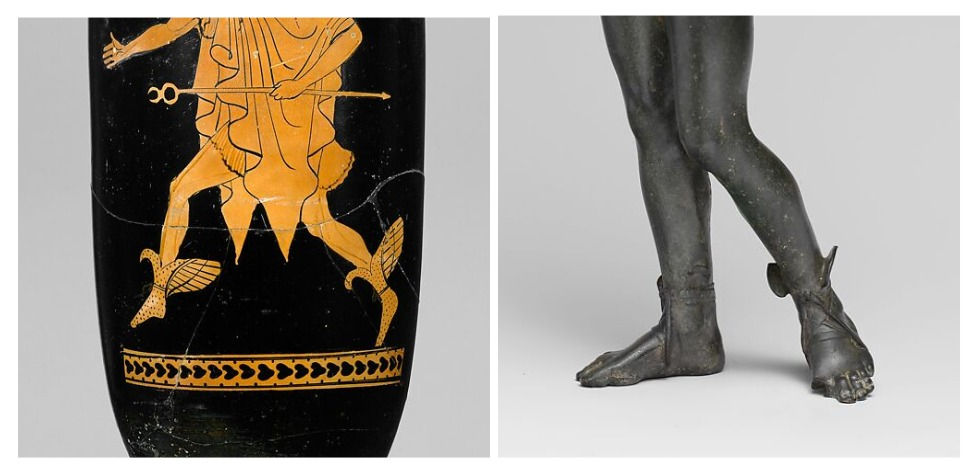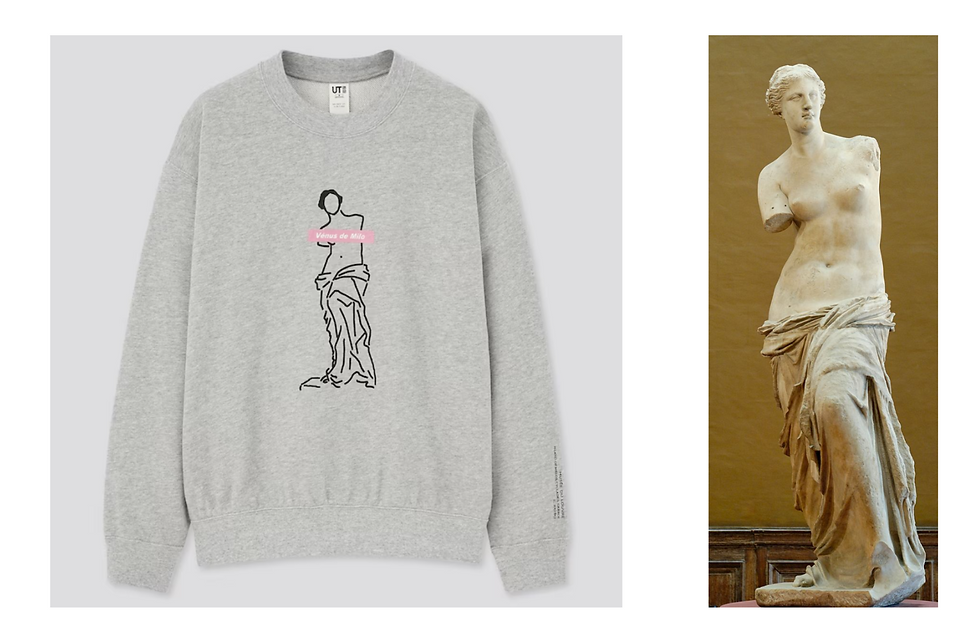ISM: Is the Ancients Fetish healthy, and is there even one?
- Yuna Kim
- Feb 7, 2023
- 4 min read
Updated: Nov 8, 2024
By "Ancients Fetish," I mean the almost phenomenon-level mainstream fascination there seems to be with Greek and Roman culture. Classicism is the ism that applies here. The Neoclassicism movement of the 18th century proves that the ancients fetish is not a modern phenomenon. If you desire a closer look at that era, search artists Jacques-Louis David, Jean Auguste Dominique Ingres, and Élisabeth Vigée Le Brun. The first is a personal favorite, the second was Picasso's favorite, and the third was Marie Antoinette's. It's fascinating, I promise you.
But anyways. The fetish in the modern-day mind lays in not the Neoclassicists but the actual ancients. Particularly, the marble sculptures of the Greeks and Romans (dating anywhere from 600 BC to 4th century AD). I initially wrote "plain white marble sculptures" but caught myself, because some of you might not know that they were not originally white, and certainly not, plain. That is something you should know. Try looking up "polychromy Greek and Roman statues," and you'll actually get some pretty cool stories and links showing you (maybe to your horror if your aesthetics prefer the plain white marble) these works might have once been more colorful than a pride parade.
This mainstream fascination with the Ancients is visible everywhere. Maybe I'm wrong, and I have just had a limited perspective. However, as I think about it, the past ten to fifteen years of my adolescent shopping sprees are absolutely dotted with memories of seeing such "art" graphic tees, prints, and cheap dorm decorations that seemed to both cater to the trend and contribute to it. The Versace logo riffs off of the famous Medusa bust visible in countless recreations dating from ancient times to the Renaissance. Pandora and Maserati don't have sculptures in their logos per say, but the former refers to the Greek mythological figure Pandora beloved by the gods, while the latter has Poseidon's (or Neptune's) trident. Apollo Global Management, luxury brand Hermes, and athletic brand Nike are pretty self-explanatory. Try comparing the Goodyear logo to surviving Ancient Greek and Roman images of the messenger god Mercury/Hermes (the former Roman, the latter Greek). The list is endless.


Comparison: The winged sandals of Hermes in the Goodyear logo, as gleaned from Ancient imagery.
Bottom Left: Bronze statuette of Hermes/Mercury at the Metropolitan Museum of Art (1971.11.11).
Bottom Right: Greek vase painting of Hermes at the Metropolitan Museum of Art (25.78.2)
Greek and Roman-inspired designs of columns, sculptures, and famous works have seeped from every sector of the arts to its relevant business operations and logistics, such as company logos and mass produced designs. The most obvious example would be the countless curtains, rugs, and t-shirts from the likes of Urban Outfitters, Pottery Barn, H&M, Walmart, and more. Even independent artist platforms such as Etsy and Society6 show a plethora of such designs, as seen in the latter's Prints section and the Greek Statue Hoodies section. I remember when I went crazy over the Louvre x Uniqlo collaboration, and snapped up their apparel depicting Venus de Milo.

Left: From the Uniqlo website.
Right: Image of the actual sculpture at The Louvre (public domain).
In my belief, the minimalist and chic aesthetics that have become so popular today are partially responsible for this generalized fetish of the Ancients. Mass-production of the same Greek and Roman-inspired graphic designs on apparel help these images to proliferate quicker, and more fleetingly, than ever. Fine line tattoos are all the rage; and many tattoo artists publicize their client-requested works on their Instagram pages, making clients’ requests depicting Greek and Roman sculptures or silhouettes freely available for viewing, recycling, and of course, reposting. Hashtag #greektattoo currently has over 50K posts, while #ancienttattoo can bring up over 7K posts with fine line, black and gray, or even Americana tattoo designs with Ancient inspirations. Art and art history are more in the public eye than I have ever experienced throughout my academic career, as activists or tourists seeking "flack" make headlines for vandalizing or touching art. Recall the infamous black hole incident of 2018, and the toe tragedy of 2020. The pandemic has left people seeking art and cultural reflection as therapy or new well-being routines, and this has led to the unintended consequence of over-exposure. I'm not a sociologist or data analyst, so do with all these opinions what you will. I want to know what you all think.
This topic is a personal fascination of mine. My love for Ancient sculptures comes from a childhood of looking at ancient sculptures in museums and studying Ancient Greek drama, language, and mythology. In other words, my interest in the field comes from personal curiosity and academic passion, as opposed to popular exposure or consumerism. As a result, the kind of interest driven by the latter is eccentric to me. I’ve even considered it upsetting at one point, but that led to the bigger conversation of why? Why are people so interested in replicating these images? What draws people to the ancient sculptures? To the ancient aesthetic? And why is it present in so many images that aim to command power, wealth, or respect? Or all three? Hermes and Versace are luxury brands; Apollo Global Management attaches the image of the god to money, investment, and assets. Let's continue this conversation. I will reference this topic frequently throughout my blog.
Comments